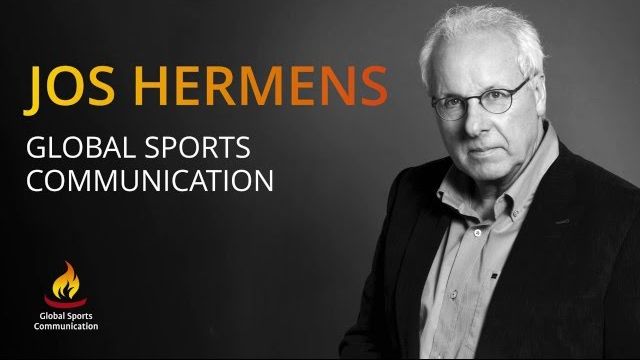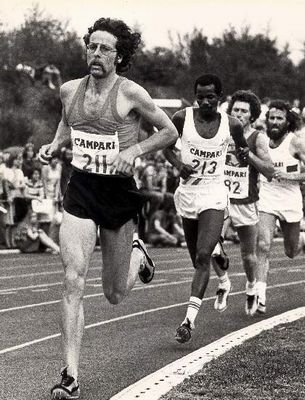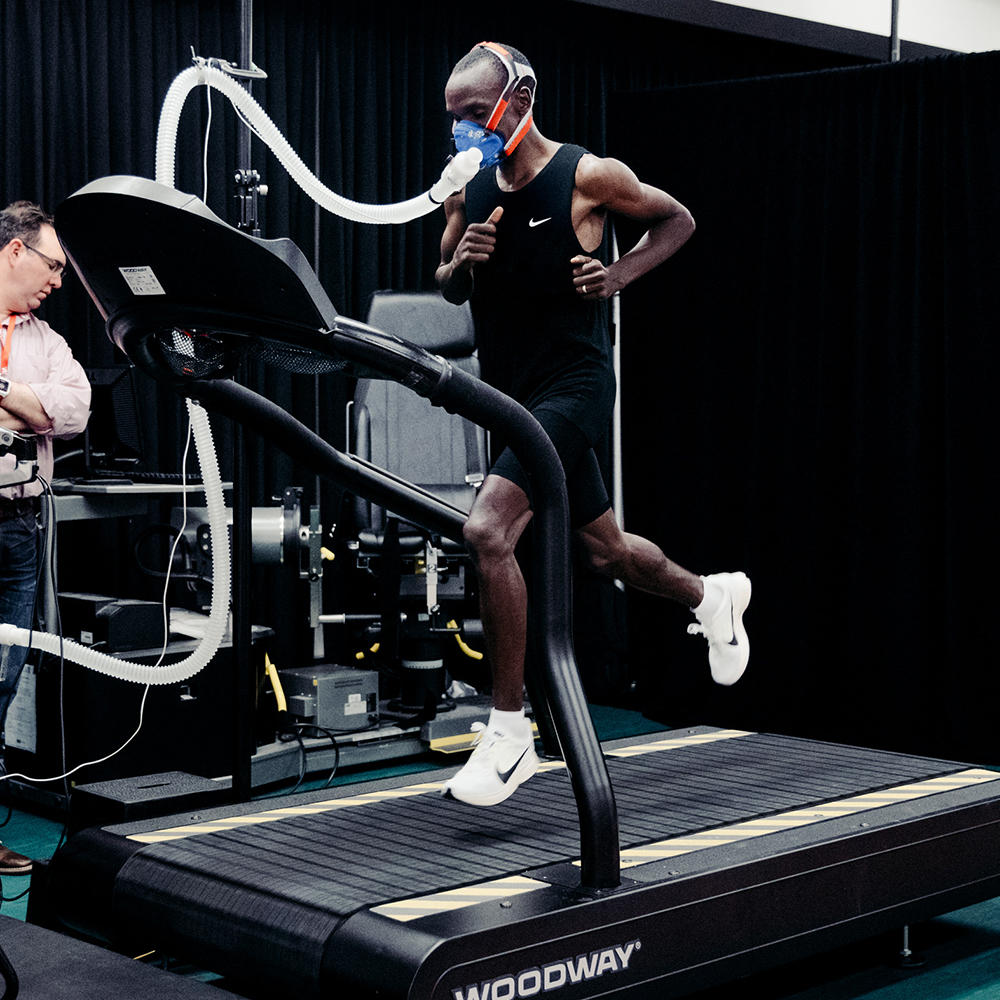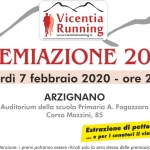Di post in post arrivo a Jos Hermens in 14’000 battute – un mese prima dell’annuncio Nike – e alla sua Global Sports Communications, supporto logistico e manageriale del progetto sub2hrs …
Alla conferenza stampa NYC Marathon 2011 avevo riconosciuto i baffi di Dave Bedford, mentre li ha già persi l’olandese volante, insieme ai capelli …
comunque ben riconoscibile a bordo pista mentre incita i suoi atleti: qui Gebre a recuperare il record dell’ora in pista (21’285m – Ostrava 2007) che fu di Jos (20’944m – Papendal 1976) prima di lasciarlo a Barrios (21,101 – La Fleche 1991).
Hermens’s role in the project is talent identification. He’s spent a fair amount of time over the past 30 years standing on some high dusty field in Kenya or Ethiopia watching teenagers in borrowed kits on a dirt track. He’s not just looking at who comes across the line first; he looks for an efficient running style, confidence, intelligence, and competitiveness … peccato non abbia buttato dentro l’ultimo gioiello … comunque copio-incollo il terzo più interessante.
Pitsiladis has been working on, and succeeding in, identifying which genes are activated by altitude and which are activated by EPO, to make drug testing more effective. Having saved blood samples for years, Pitsiladis can go back and look at exactly which genes were activated, the altitude ones or the EPO ones. Which brings to mind, and discussion, the world record holder in the marathon, Kenyan Dennis Kimetto.
The thing that makes Kimetto suspicious, Hermens said, is that he had few previous races of any kind, no track record. He came out of nowhere, ran a world record (2:02:57) at the 2014 Berlin Marathon, and has been, according to Hermens, “running for shit” since then. So, though he was no doubt tested aggressively after his world record performance, he had little baseline prior to that for comparison. Perhaps his baseline was doped, Hermens suggested— genetic testing may suss that out.
Ideally, tests would identify a young child with outrageous oxygen uptake and insane endurance, but “we are in a little bit of a hurry,” he said, acknowledging the Sub2 Project’s 2019 deadline. Therefore, potential candidates already would have to have run some very fast 10Ks and half marathons and be ready to run a marathon within the next two years.
“I don’t have a specific age in mind. With Bekele, I think we can get to 2:01-high,” said Hermens. “Maybe we’ll arrange a marathon on a dike at sea level, downhill, with a tailwind. Now runners drink every 5K. Maybe in our time trial, runners will have a straw so they can drink as they run. We don’t care if the first sub-two hour marathon is IAAF record eligible. First, we achieve it. Then we do it record eligible. The problem with scientists before this—they talk and crunch numbers and theorize. But we are the first ones to try to make it happen in the real world, not in a lab.”
Another way the Sub2 people plan to shave seconds off a marathon performance is by designing better footwear. According to Hermens, African runners accustomed to running barefoot are one percent slower over the course of a marathon when they wear shoes. “Our shoes are too soft,” he said. “They’re hobbling. We’re developing some harder shoes, we’re testing them now, so they can gain one percent right there. One-hundred and seventy seven seconds”—the time between the current world record and 1:59:59—“is, what? Three percent?”
“Yeah, psychology, that’s definitely the hardest part, but you know, way back, I was a teacher. I know what makes an athlete tick. What you do is really very simple—you tell them something, right before the race. Like for example, there was an 800 runner While Ethiopia and Kenya are a wellspring of talent and the areas he knows best, they’re not the only places Hermens has looked for potential Sub2 runners. “China has huge potential but it’s difficult to get in there,” he said. “There are a bunch of Tibetans coming to Ethiopia to train though.” He’s looked at runners from Eritrea and Uganda, who he said had generally lived a tough physical life at altitude and had a good diet without much processed food, similar to Ethiopians and Kenyans. In particular Hermens mentioned teff, a grain commonly eaten in Ethiopia and Eritrea that is high in iron. “God, I hope they never get a McDonald’s in Addis [capital of Ethiopia],” Hermens said, grabbing his midsection to demonstrate the effects of the golden arches. But while Hermens said the traditional east African diet and lifestyle are perfect for fast marathon running, “African runners are not very good at drinking. They don’t understand the importance of hydration, and they don’t practice it much.” The runners that show up to these races are “not the lazy ones,” they’re already motivated, he said, and will be on board with the Sub2 Project. “No, Sub2 doesn’t pay them, but I can get them a contract with shoes and equipment and some money.” Even though he now owns a business, makes money, and wears a suit, he doesn’t feel like a capitalist. “You can write, ‘Hermens, the humanist anarchist, says he will not force Sub2 down anyone’s throat.’ They can do it if they want to, or not. I personally am not in it for the money, although there may be a little bit of money to be made,” he said, gleefully raising his capitalist eyebrows. But then, more seriously, “This Sub2, it’s my dream.” He was passionate about the project, pink-cheeked and shiny just talking about the possibilities, especially if they had more time and budget. But considering the group has not raised the $30M they’d originally planned on and the clock is ticking, I asked if it might not be expedient to work with runners who were already world-class, like Wilson Kipsang. Or Eliud Kipchoge, who Hermens represents. At this point he stopped talking, smiled, and looked at me questioningly. I filled the void by mentioning I’d read an interview with Pitsiladis in which the author said Kipchoge was working with Nike on a similar project, but had refused to work with Sub2. Was that true? “I don’t know. Maybe he is. I can’t speak to that. I mean, he wears Nike shoes …” Rileggendo 5’000 battute @sub2hrs, c’era già tutto a Berlino, fine settembre 2016, prima di Kenenisa Bekele a 2h03’03” e Wilson Kipsang poco dietro. Qui altre 11’000 battute @theGuardian che si chiedono … who is it for? … rather than seeing elite athletes as sources of data for the betterment of science and medicine, we should spend time with the athletes themselves, and find out what kind of sport they want to be involved in … parola di antropologo Michael Crawley.Post Correlati












Leave A Comment